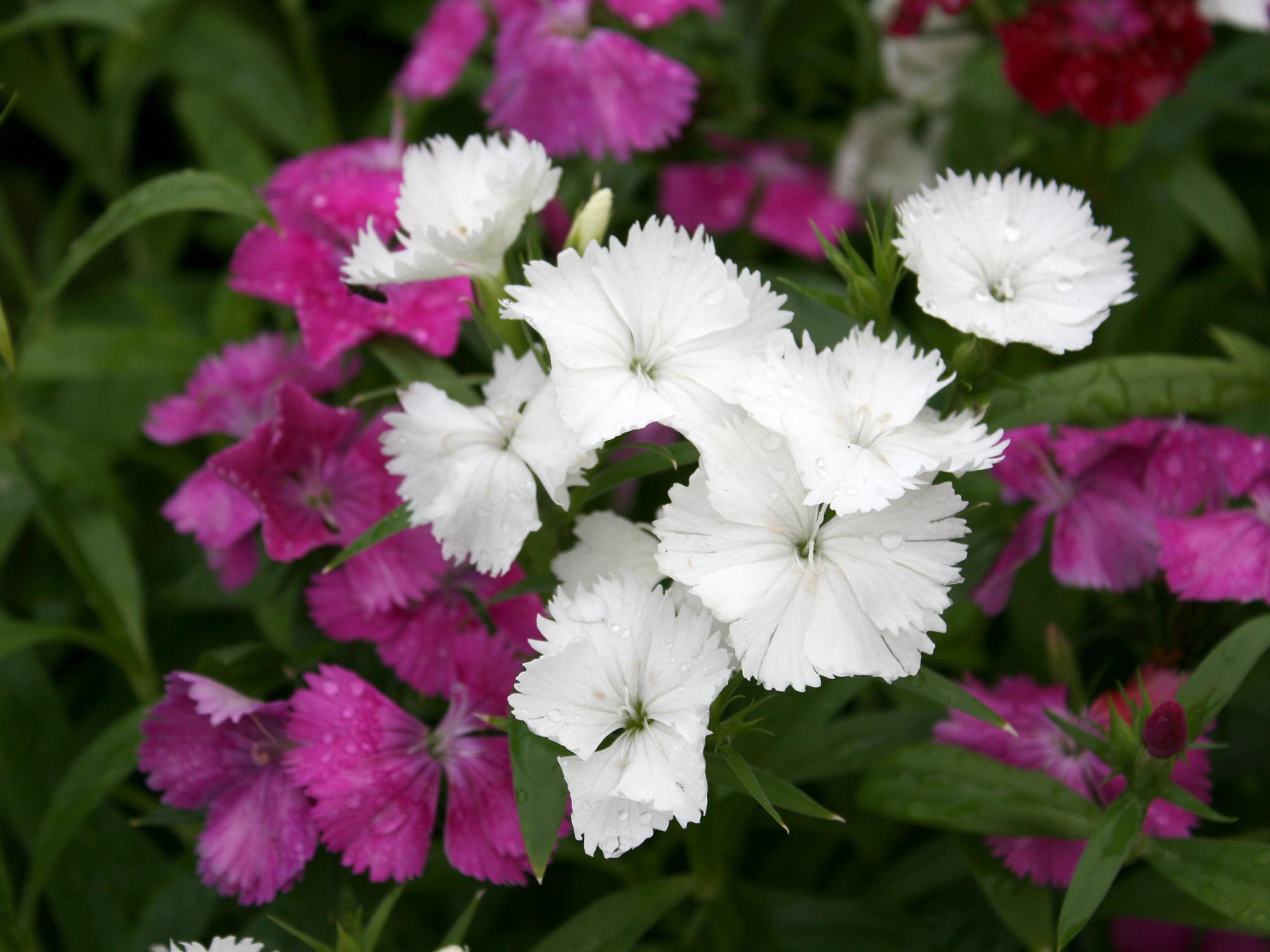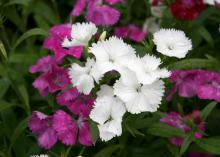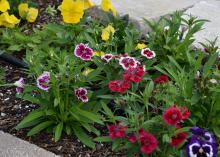Information Possibly Outdated
The information presented on this page was originally released on November 13, 2017. It may not be outdated, but please search our site for more current information. If you plan to quote or reference this information in a publication, please check with the Extension specialist or author before proceeding.
Choose Telstar dianthus for winter, spring color
Even though the air is still warm in many parts of Mississippi, it’s time to plant annual winter color. Last week, I wrote about pansies being a great color choice. Another sure-fire pick is dianthus.
One of my all-time favorite cool-season combinations is dianthuses and pansies. I constructed a new landscape in my hell strip -- that difficult to use piece of ground between my sidewalk and the street -- and the dianthuses and pansies are my anchor plants.
Telstar dianthus is a great choice for fall color. In fact, in my coastal Ocean Springs landscape, I’ll be planting these now through the spring season for an outstanding color display.
Fall is a good time to plant dianthus, as the extra time in the ground allows for a robust root system to develop, resulting in a beautiful and colorful display next spring.
Cold nights will damage the flowers and turn the foliage purplish, but the plants will recover in coastal counties. Gardeners in north Mississippi will need to give fall plantings protection from the cold. Or you can simply plant new plants next spring for a great pink-themed color display.
My favorite dianthus for the cool season has to be the Telstar series. It has great colors ranging from carmine rose, pink and purple to one that is almost red. There are a couple of pretty bicolors that are called picottees.
As an experiment last spring, when I was transitioning from cool season to warm season color, I transplanted a couple of Telstar dianthuses into 3-gallon containers and kept them in a shady area of my yard. As long as I remembered to water these plants, they flowered all summer long. I’m going try this again next summer in a bigger way. Wish me luck.
The uniform growing habit of Telstars make them a perfect mass-planting choice. Always plant in full sun in well-drained soil. Telstar dianthuses are susceptible to root disease problems if the soil is consistently wet, which is always a concern in our cool, wet falls and winters. I grow my Telstar dianthuses in subirrigated containers, eliminating the worry about overly saturated soil.
Telstar dianthus is a moderate to heavy feeder.
At planting, always fertilize with a good, slow-release fertilizer, placing about a tablespoon in the planting hole and then supplement with a monthly, water-soluble fertilizer. After the first flowering flush, prune the plants back about 3 inches. This seems like a radical step, but it encourages more lateral growth and even more flowers.
One of the most surprising things about dianthus flowers is that they are edible. After washing and gently patting dry, hold the flower base and pull on the petals to separate. Add these colorful, frilly petals to any fresh lettuce or fruit salad. Since we eat with our eyes first, they add interest to our daily meals.
And one last tip: Look for dianthus on garden center racks that feature abused plants at a discount. Take these plants home and prune them, cleaning up the off-looking foliage and spent flowers. Water well and fertilize with water-soluble fertilize. Nine times out of 10, in a couple of weeks, they will be rejuvenated and ready for your garden.






